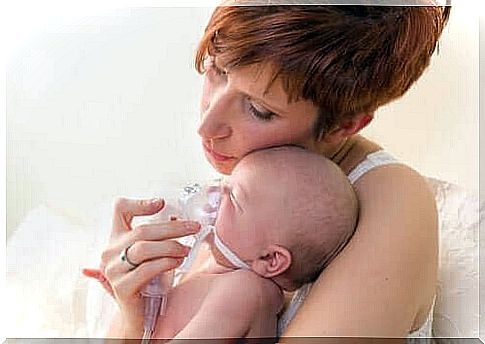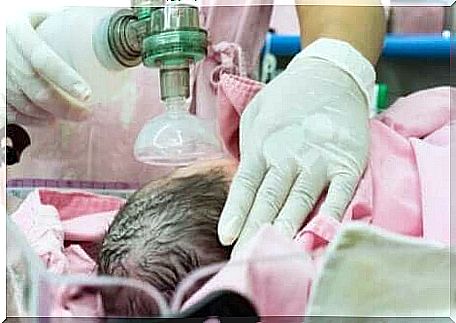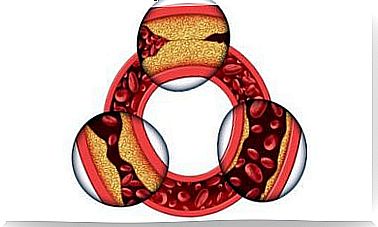The Most Common Respiratory Diseases In Newborns
Respiratory diseases in newborns are common and can be very dangerous. Recognizing and treating them immediately can save lives.

Respiratory diseases in newborns are quite common and need to be investigated and treated early enough to avoid major complications.
The lungs are the last organ to develop in a fetus before birth. Therefore, it is prone to serious problems. If a baby is born prematurely, their lungs may not be fully developed and thus more risk factors.
But genetic factors can also cause breathing problems in newborns. Other causes can be a complication during delivery, which is characterized by reduced blood circulation in the newborn, or infections in the baby after birth.
In any case, treatment is crucial because respiratory diseases can have serious consequences. In fact, they are one of the most common causes of newborn death.
What are the symptoms of respiratory disease in newborns?
The main symptoms that doctors look for right after giving birth and in the days that follow are:
- No breathing
- Shallow breathing
- Respiratory sinus arrhythmia
- Snoring while breathing
- Excessive mucus build-up
- Pulmonary retractions

The most common respiratory diseases in newborns
There are many different types of respiratory diseases in newborns. The most common are:
Apnea
This is the baby’s respiratory arrest for about 20 seconds. It usually occurs when the lungs are underdeveloped.
The baby’s pulse may drop during apnea. Bradycardia (a below average heart rate) and a bluish discoloration of the skin known as cyanosis may also occur.
It is common in babies born by caesarean section or prematurely. Usually, if the baby is oxygenated , this complication will go away in less than 24 hours.
lung infection
Premature babies are at high risk of developing pneumonia because their lungs are not yet fully developed.
The first stool a newborn baby passes is called a meconium. Sometimes the baby can breathe this in when it is born. This can cause an infection that leads to pneumonia.
Respiratory distress syndrome (IBS)
This condition is also more common in premature babies, especially those born between the 36th and 39th week of pregnancy.
At this stage of development the baby has not yet developed any pulmonary surfactant. It is a liquid that protects the lungs and helps them fill with air without putting pressure on the alveoli. That is how she keeps them free.
The result can be a collapsed lung.
Bronchopulmonary dysplasia (BDP)
This is not a congenital complication. A baby becomes ill from the treatments it receives as a result of premature birth. While providing a baby with oxygen is necessary to save their life, it can damage their delicate lungs. This can cause the baby to have difficulty breathing.
Pneumothorax
This occurs when there is air between the lungs and rib cage at birth, which creates pressure in the newborn’s body. In this case, the baby will have bluish skin and difficulty breathing. It must therefore be treated promptly by a healthcare professional by inserting a catheter that will allow the trapped air to be removed.
Other respiratory diseases
In addition, there are other less common but equally serious respiratory diseases in newborns:
- Congenital bronchiectasis. An inflammation of the airways caused by an infection.
- Pulmonary hypoplasia. A congenital abnormality that leads to incomplete development of the lungs.
- Congenital pneumonia. An inflammation of the lung tissue that is not caused by an infection.

Can you prevent respiratory diseases in newborns?
Respiratory diseases are difficult to predict and prevent. Hence, experts recommend following the following tips during pregnancy:
- Go to all checkups
- Eat a healthy diet
- Avoid smoking
- Avoid drinking alcohol
- Don’t do drugs
Either way, having a healthy pregnancy will help prevent premature labor and reduce the risk of developing underdeveloped lungs.









